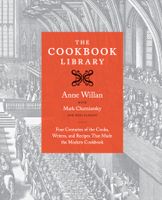Prue Leith's latest book is now on ckbk. Get 25% off ckbk Membership
An Independent Europe
By Anne Willan
Published 2012
On the wider scene in Europe, the great picaresque novel Don Quixote (1605) set the tone with a meal that is far from the farcical gargantuan feasts in Rabelais’s sixteenth-century novels. Cervantes shows us a particular style of eating—the typical diet of the Spanish rural gentry at the turn of the seventeenth century. The relatively impoverished man of La Mancha dines on quite ordinary fare: “An occasional stew, beef more often than lamb, hash most nights, eggs and abstinence on Saturdays, lentils on Fridays, sometimes squab as a treat on Sundays—these consumed three-fourths of [the gentleman’s] income.”18 Despite the vast wealth that had poured in from the Americas, Cervantes shows, by the early seventeenth century, even the landowning classes had been hurt in the badly managed economy at home. In contrast to Spanish poverty, which worsened over the century, the court itself was magnificent, if austere by the standards of other European aristocracy. The wife of the French ambassador to the court of Philip IV, Madame de Villars, remarked on the paradox in a letter of 1680: “With all the gold coming from the Indies, Spain does not seem very opulent.”19 Books about cooking were few and did not break new ground. In Libro del arte de cozina (Book of the Art of Cooking, 1599),
Part of
Advertisement
Advertisement


